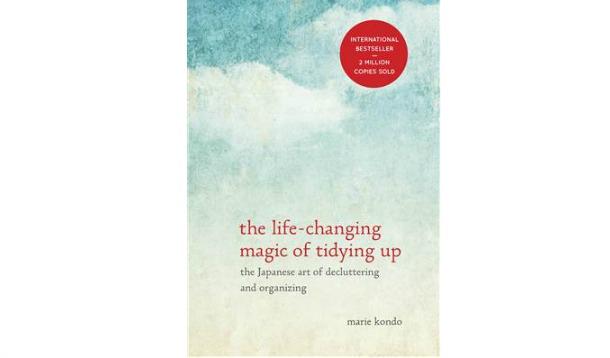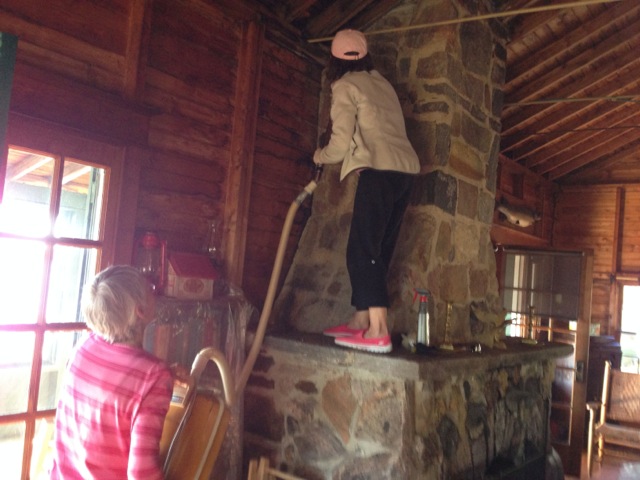
It is the time of year for change, resolutions, and order. For me this entails an endless quest for a neatly organized house.
My desire for such a home used to be based on a 50s notion that a good wife and mother should present a tidy abode. Now that I have cheerfully found other means of fulfillment, I realize that my need for order is likely psychological and should be prioritized.
For years I have noticed that for three hours every Wednesday, before the children return and following a visit from my housekeeper, I feel my most sane and mentally productive.
This dynamic oasis feels noticeably preferable to blistering anxiety ignited by being buried alive in household clutter.
As a traditional adult child, I choose to blame my psychological need for order on my mother’s side of the family. The Hindmarsh women have waged a ruthless war on filth and clutter for generations. There is no doubt that my grandmother has lived to be 96 on a steady regime of yoga, bran buds, grit, and vacuuming.

Sadly, it appears that my home organization genes were biologically dominated by my father’s Cadillac-driving, antiquing mother. In a past life I must have been the manager of a bunker or perhaps a squirrel.

My compulsion to stock-up often leads to multiple purchases of the same item, for fear of running out. I also habitually store things, “In case I might need them some day.”
A passion for kitsch, seasonal decor and deep empathy for unloved stuffed animals only worsens my plight.
When purging becomes inevitable, Catholic guilt about wasted money, the environment and feelings of sentimentality frequently derail my goals.
Since the health department has yet to darken our door, only minimal extractions have been required to date. This all changed December 2015 when there was less than an hour to find the mittens.

By January 1st, bursting with resolutions and drowning in crap, it was time to do better. I began by fleeing to HomeSense, a safe haven for both mild and severe procrastinators.
After exhaustively loading up on colourful space savers, Chapters beckoned for a strengthening latte and pile of decorating magazines.

Just beyond the front doors, Marie Kondo’s book, The Life-Changing Magic of Tidying Up was waiting for me. Seduced by the red tiny font and beautiful light blue jacket, I plunked down and read the whole thing.
Translated from Japanese, the author’s voice is immediately lovable. She is strict, smart, funny, and a teensy bit scary. I crave her friendship but would be terrified to let her near my stuff. The tone is sunny with noticeable airiness between the words.
Although over 200 pages, the book is a page-turner boiling down to a few rules surrounded with supporting arguments and tips for success.
Espousing her self-created KonMari Method, Kondo insists that we, “Start by discarding. Then organize your space, thoroughly, completely, in one go.” For an item to be granted asylum, it must spark joy when we touch it. Kondo insists that,
“A dramatic reorganization of the home causes correspondingly dramatic changes in lifestyle and perspective. It is life transforming.”
No need to give up wine either: “It’s a very strange phenomenon, but when we reduce what we own and ‘essentially ‘detox our house, it has a detox effect on our bodies as well.”
Unlike the immediate pull of most great reads, Kondo’s work creates skepticism first followed by enlightenment. Tales of wildly stuffing garbage bags and sneaking out her family’s belongings can be off-putting and make her seem nutty.
She quickly wins my allegiance by arguing that daily tidying is a complete waste of time, “If you tidy up in one shot, rather than little by little, you can dramatically change your mind-set.”
Kondo also claims that, “Storage experts are hoarders” and that, “those ‘storage solutions’ are really just prisons within to bury possessions that spark no joy.” Busted.
Throughout the book, Kondo offers excellent reasons why we can and should discard every item needlessly being held onto. What she says about the need to store unloved gifts is priceless, “The true purpose of a present is to be received. Presents are not ‘things’ but a means of conveying someone’s feelings.” She suggests that it is the thought and transaction that is special and not the item.
She calls me out for storing unwanted pink hand-me-downs in my younger daughter’s closet, even though I know she prefers her brother’s clothes and addresses my stockpile syndrome: “For people who stockpile, I don’t think there is any amount that would make them feel secure.”
Category by category she gives permission to discard papers, photos and pocketed hotel products. She then offers tips of how to store the things we adore.
Initially Kondo may appear merciless, but the deep respect she has for the things she loves and keeps, makes me want to hug my socks: “Possessions that have a place where they belong and to which they are returned each day for a rest are more vibrant.”
Wild with curiousity, I decide to test my possessions for sparks of joy. Reaching into the back of my closet to touch a beautiful pink cardigan I feel nothing but guilt. The sweater has not been worn in over a year because it is itchy and gives me a rash. Putting my hand on a pair of expensive black pants, faded to grey after a few washes, incites the same emotion. A lump inflates in my throat and the feeling is similar to enduring a relationship with the wrong person. Taking a deep breath, I reach for a wedding gift from my friend Natalie and smile with happiness. This crazy exercise works so well that I am afraid to touch the children!
Speaking of children, my companion Gayle’s kids were able to downsize their toy collection by utilizing the same techniques.
Disregarding Kondo’s book for being too extreme might make for missed opportunities. As grown-ups we have earned the right to take what we want from each experience and discard the rest. Strict compliance to the KonMari Method is unrealistic for our personal domestic carnival but I am grateful for permission to let go of things being kept for the wrong reasons. It makes sense that if we surround ourselves with items that bring us joy, not sadness and regret, we will automatically be happier.
Kondo’s endless garbage bags can be off-putting to the environmentally conscientious but recycling bins and trips to Value Village are easy substitutes. Her methods may also lead to future financial and environmental benefits as a clutter-free home encourages one to purchase less.
Thankfully, I think this book may have also chased the squirrel out of me. Buying in bulk makes financial sense for large households but I will never use 1,500 Q-tips before they turn to dust.
Freeing us from the need to keep an enormous book collection Kondo states, “The moment you first encounter a particular book is the right time to read it.” This logic feels perfect to me as I found hers when I was ready for help with my insurmountable mess.
So Happy 2016! It is time to mail the cards, empty the gift cupboard, burn the candles, and drink the good booze. May your path be clear, especially of Lego, and lead you to what you love.